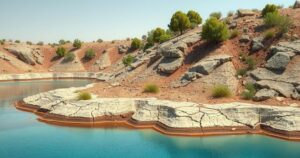Study Refutes Nuclear Test Claims Linked to Iran Earthquake

A study dismisses claims that a recent earthquake in Iran was linked to a nuclear test, asserting it resulted from natural seismic activity. Research led by Dr. Benjamin Fernando shows that the earthquake’s characteristics differ from those typical of a nuclear event. Misinformation spread rapidly thereafter, emphasizing the need for timely fact-checking and communication among scientific communities and media.
Recent research has dispelled the notion that a 4.5 magnitude earthquake in Iran was a result of a nuclear test, as circulated on social media and reported by some news outlets in October 2024. The study, led by Dr. Benjamin Fernando from Johns Hopkins University, emphasizes the dangers of misinterpreting scientific data during international tensions. The earthquake, occurring in a seismically active region near Semnan, was confirmed to be natural seismic activity rather than a covert nuclear detonation.
Dr. Fernando’s research utilized seismic signals from monitoring stations to trace the earthquake’s origins. It demonstrated that the quake stemmed from a reverse fault linked to the collision of the Arabian and Eurasian tectonic plates. The study concluded that the seismic characteristics significantly differ from those of a nuclear explosion, further supported by historical data from the Comprehensive Test Ban Treaty Organization, which noted similar earthquakes in previous years that were unrelated to nuclear activity.
Misleading claims of a nuclear test emerged within minutes of the earthquake, fueled by misinterpretations of seismic data which propagated rapidly on social media platforms. Initial tweets misrepresented the data, ultimately leading to misinformation and possible disinformation campaigns, accentuated by paranoid connections to unrelated seismic activities. Some notable misinformation was linked to accounts associated with Russian disinformation efforts.
Moreover, the research highlighted the rapid transfer of misinformation from social media into mainstream media, with various international news outlets amplifying the unfounded claims of a nuclear test. In particular, Indian English-language media played a significant role in perpetuating these narratives, often relying on incorrect seismic data while referencing one another’s reports. This underscores the urgency for scientific organizations to swiftly counteract inaccuracies and safeguard public understanding.
In response to the spread of misinformation, the researchers advocate for faster collaboration among seismologists to verify data and address public misconceptions promptly. Dr. Saman Karimi, a co-author of the study, suggested that scientific agencies provide detailed reports that could effectively combat false narratives. Building partnerships between social media platforms and scientific organizations could also aid in disseminating accurate information, curbing the spread of misleading content.
Following the occurrence of a significant earthquake in Iran, there were widespread claims on social and mainstream media that linked the event to a potential nuclear test by the Iranian government. This assertion arose amid heightened geopolitical tensions in the region. The American-led research seeks to clarify the circumstances surrounding the earthquake, utilizing scientific analysis to confirm its natural origins and challenge the legitimacy of the nuclear test claims.
In conclusion, new research has effectively debunked the claim that the recent earthquake in Iran was triggered by a nuclear test. The findings underscore the importance of accurate scientific communication, especially during periods of geopolitical unrest. Moving forward, the establishment of swift response mechanisms for correcting misinformation and the collaboration between seismologists and media platforms are crucial to safeguarding public understanding.
Original Source: www.albianews.com






